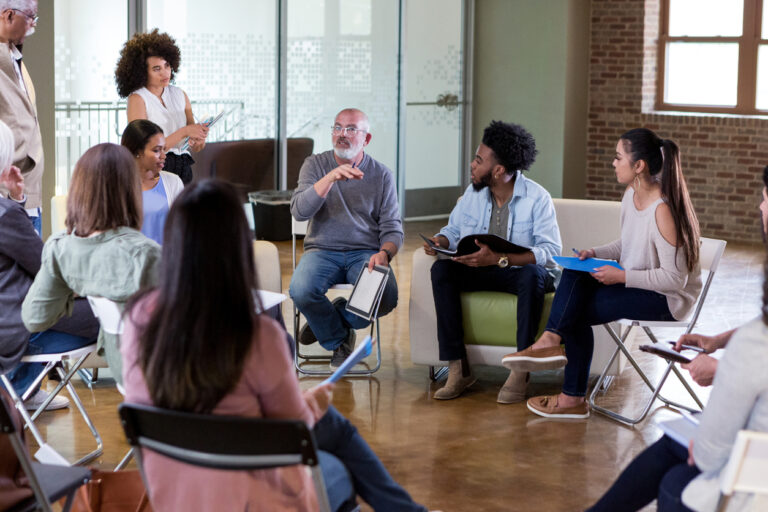Related Articles
Subscribe to the Greater Public newsletter to stay updated.
This site is protected by reCAPTCHA and the Google Privacy Policy and Terms of Service apply.

How do we reach new audiences?
It’s hard to imagine now, but there was a time not too long ago when people had very few choices for media and the content it delivers. When public media arrived in the 1970s, people had access to maybe four to six TV stations, a number of radio stations that they “scanned” through in their cars, and their own music collections. We learned about new stuff when it was recommended by our family and friends through word-of-mouth. Back then, “if you build it, they will come” was accurate thinking because, by today’s standards, the landscape was relatively barren.
Our audience found us, we honed our service and appealed to them, they’ve loved us and supported us financially for the last half century. Over the decades, we’ve carefully cultivated and super-served this highly educated and evangelical core audience, and they have rewarded us for it, but we didn’t think about the people who were not being served. It’s not possible to successfully reach and serve a wide swath of the region with a single or even two broadcast channels, so choices had to be made and they were the right choices for that moment in time.
Fifty years later, we’re asking ourselves the key question: How do we hold ourselves accountable to serve our communities, including audiences we haven’t been serving?
Today, with seemingly infinite media choices at our fingertips 24-7 and content designed to appeal to the narrowest of niches, we have a chance to make different choices about how we define “audience service.” What got us here will not get us to where we need to be 20 years from now, serving new audiences on the platforms they prefer. We’ll have to be intentional about how we structure ourselves, how we use research and data, how we engage our communities and, ultimately, how we develop content and products that are meaningful and useful to the people we are trying to reach. This requires us to put the audience first because today, if you don’t build it with them, they’re not going to show up.
We must listen deeply to our audiences’ inherent wisdom about their own experiences, and make sure those same experiences are represented amongst staff and leadership in our organizations.
Audience development demands that we evolve into externally-facing organizations.
It’s hard to notice when change happens over the course of decades, but based on the most recent census it’s clear to see that the population of this country is dramatically different than it was in public media’s early years. In the 2020 census, people of color made up 43% of the population, up from 34% just ten years earlier. In the 1980 census, the country was a whopping 80% white. This country is becoming more multicultural and more multiracial every year. Against this backdrop, the lack of diversity in public media’s audience is too alarming to dismiss.
Audience development demands that DEI be core to our organizations. Our very future depends on it. And since we can no longer build our content and products without putting the audience first, we have to develop new skills that will require organizational change. The discipline of audience development demands a whole organization’s focus. It’s about how we work across departments, as teams, on various stages of the audience journey. It’s about the products we create and the journey we offer audiences, based on their preferences and needs.
The graphic below, designed by Shane Guiter of Public Works and Brianna O’Higgins of KERA, shows how our understanding of the classic audience funnel needs to change and which departments in organizations must be involved in each stage of the journey.

If we are going to create the right products on the right platforms for each stage of the audience journey we cannot continue with a “hand-off” workflow: Content creates, then programming programs, then digital converts and posts, then marketing markets, etc. At every step, we must consider how we are welcoming new audiences and developing relationships with them that will lead to loyalty and support. It’s no longer enough to just send letters and emails and expect response. Audience development is about building relationships.
How do we know if we’re heading in the right direction? Analytics! For every platform on which we reach and engage with audiences, there is a way to measure its impact. Building audience relationships can be a stab in the dark without access to data and analytics so we can determine if our products and services are doing what they’re designed to do. Data will help to identify segments of our audience we haven’t typically served and to learn as much as we can about these target markets. Audience data allows us to navigate the many decisions that must be made about where to initiate audience relationships and how they might grow. Of course relationships are not built on data alone.
We cannot continue with a “hand-off” workflow: Content creates, then programming programs, then digital converts and posts, then marketing markets.
We must listen deeply to our audiences’ inherent wisdom about their own experiences, and make sure those same experiences are represented amongst staff and leadership in our organizations. Our audiences themselves are our most important source of data. Building relationships means we’re not just looking for what audiences can offer us, rather how we can truly serve them as part of a mutual partnership.
The isolation of the last two years has made our internal silos much more challenging to navigate. We have to re-learn how to work as teams that are unified in meeting the same organizational goals. We will have to make smart use of technology, work in cross-disciplinary teams, and consider how we can make each step of the journey better – from the point of view of the audiences we aspire to serve.
Siloed systems that took decades to build are not quickly or easily overhauled. But the many pivots we’ve made during the pandemic are evidence that we can and will change where there is necessity and will to do so; this is true for organizations of any size. We can examine what new ways of doing things were truly audience-first, and use those examples as our guide.
During the last two years we proved to ourselves that doing things in new ways was possible. And the changes we’ve been predicting for more than a decade have arrived. It’s up to us to adapt our industry and embrace the opportunities that lie before us. Let’s acknowledge that what we built was designed to serve only a slice of the American public, and what we now build to serve much more of our communities will be the key to our relevance in the future.
Greater Public, The Public Radio Program Directors Association (PRPD), and Eastern Region Public Media (ERPM) collaborate to explore this issue deeply in the Audience Development Summit, held virtually April 26-27, 2022.
View these related member resources and more with a Greater Public membership:
This site is protected by reCAPTCHA and the Google Privacy Policy and Terms of Service apply.
New to Greater Public? Create an account.


